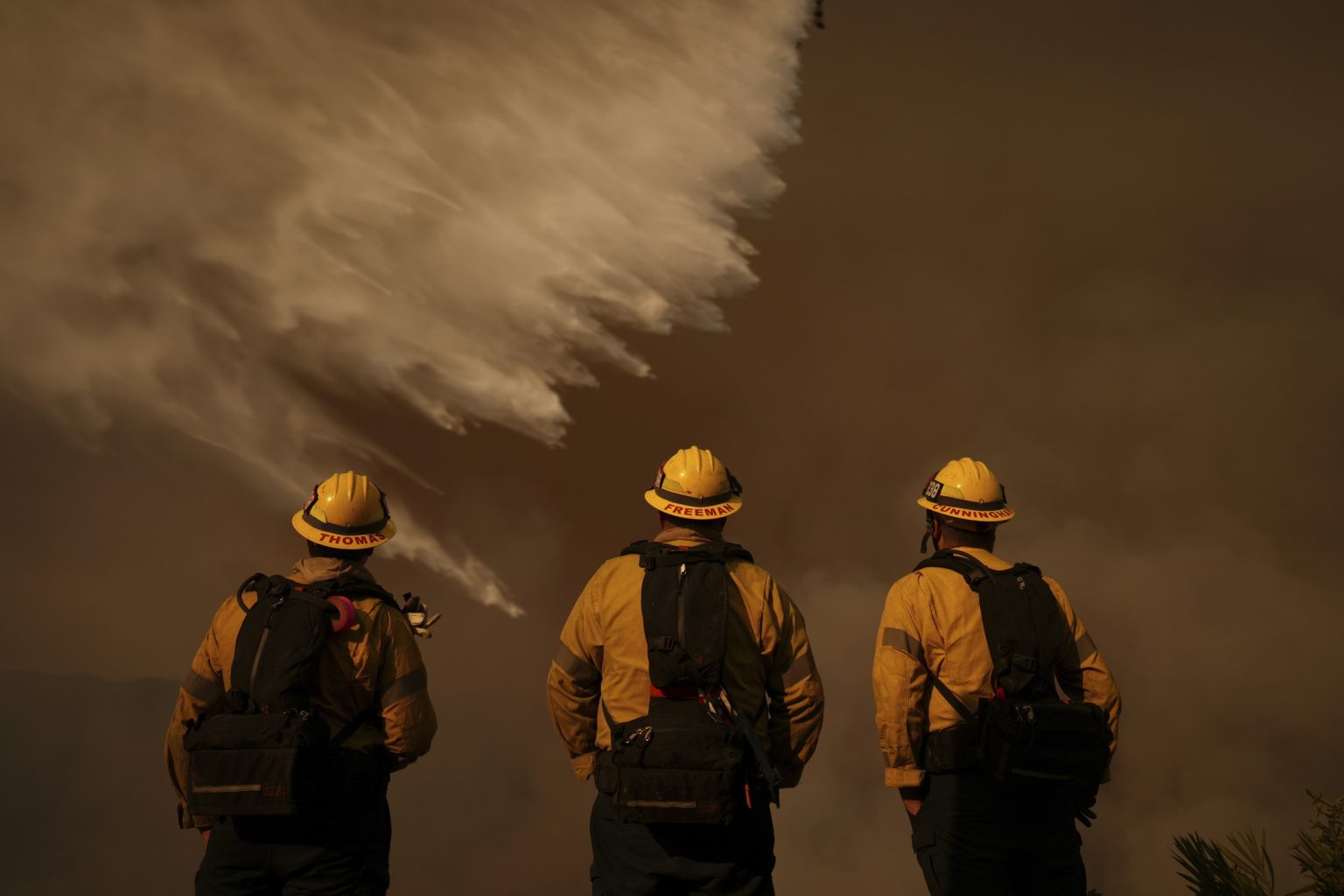The devastating wildfires that ravaged Southern California in late 2024 and early 2025 brought the often-overlooked dangers of urban fire smoke into stark relief. Unlike wildfires that primarily consume vegetation in remote areas, these fires tore through densely populated neighborhoods, incinerating not only trees and brush but also homes, vehicles, and countless synthetic materials. This created a toxic plume of smoke far more complex and potentially harmful than that produced by typical wildfires. The combustion of plastics, building materials, and other urban debris released a cocktail of hazardous substances, including fire retardants, hydrogen chloride, bromine compounds, and potentially lethal hydrogen cyanide. The presence of legacy asbestos in older structures further compounded the risk, adding another layer of carcinogenic material to the airborne mix. While the immediate devastation of lost homes and businesses was readily apparent, the insidious health effects of this toxic smoke posed a more pervasive and long-term threat to residents and first responders alike.
The very nature of urban fire smoke makes it challenging to assess the full extent of its toxicity. While air quality indices (AQI) provide a general measure of pollution levels, they may not fully capture the diverse range of hazardous substances present in the smoke from these urban conflagrations. The specific composition of the smoke varies depending on the materials being burned, creating a complex and constantly shifting mix of toxins. As experts point out, the danger lies not just in the presence of these substances but also in the dose and duration of exposure. A short burst of intense exposure can be as harmful as prolonged exposure to lower concentrations. Determining the long-term health consequences requires detailed analysis and ongoing monitoring, a task made more difficult by the rapidly changing conditions during an active fire event.
While the intensity and rapid spread of the fires presented immediate dangers, they also had an unintended mitigating effect on air quality in some areas. In places like Altadena, where the firestorm moved swiftly, the intense heat pushed much of the smoke high into the atmosphere, reducing ground-level concentrations. Further aiding in dispersing the smoke were the strong Santa Ana winds, which, while contributing to the rapid fire spread, also carried a significant portion of the smoke offshore and out to sea. This complex interplay of factors highlights the challenges in predicting and managing the air quality impacts of urban fires. Scientists are still working to fully understand the complex dynamics of these events and the long-term health consequences of exposure to such diverse mixtures of pollutants.
In the face of these unprecedented air quality challenges, public health officials stressed the importance of proactive measures to protect residents. Strong warnings were issued, urging people, particularly those with pre-existing health conditions, to remain indoors as much as possible, limit strenuous outdoor activities, and wear properly fitted N95 respirator masks if venturing outside. The fires underscored the need for readily available and accurate air quality information, enabling individuals to make informed decisions about their safety. The widespread demand for air purifiers, which quickly sold out in many stores, reflects the public’s growing awareness of the dangers of smoke inhalation and the importance of mitigating exposure.
The widespread impact of the fires prompted calls for increased preparedness and improved warning systems. The rapid spread of the flames highlighted the need for multiple communication channels to alert residents of impending dangers, especially in areas prone to high winds and rapid fire growth. The experience served as a stark reminder of the importance of community-level preparedness, including having evacuation plans in place and ensuring access to essential supplies like air purifiers and respirator masks. The fires also emphasized the need for continued research into the specific health effects of urban fire smoke and the development of more comprehensive air quality monitoring systems that can accurately assess the complex mix of pollutants released during these events.
The long-term health consequences of the Southern California urban firestorm will likely unfold over years, requiring ongoing monitoring and research. The scale and intensity of these fires serve as a sobering reminder of the growing threat of urban wildfire smoke and the urgent need for proactive strategies to protect public health. From improved early warning systems and evacuation plans to enhanced air quality monitoring and more comprehensive public health guidance, the lessons learned from these devastating fires will be crucial in mitigating the impact of future urban fire events. The fires forced a reckoning with the unique dangers of urban fires, demanding a more sophisticated understanding of fire behavior, smoke dispersion, and the long-term health impacts of exposure to complex mixtures of urban combustion products.

